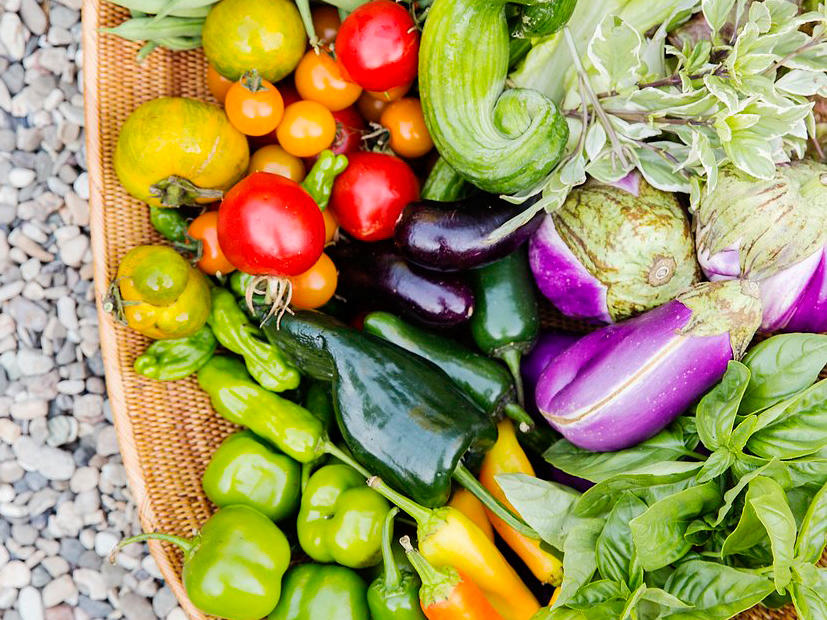
Should We Still Grow Backyard Veggies in the Drought?

It’s no secret that summer fruits and veggies take a fair amount of water to grow and produce a crop. With California’s mandatory 25% water cut backs, does it still make sense to plant our favorite backyard tomatoes, beans, and cucumbers?
We ran this question by water experts who attended Sunset’s water summit and they gave us the green light to plant. They cited two reasons to grow-your-own:
1) We are less likely to waste food we plant ourselves (if we grow the right amount, that is).
2) It takes far less water and energy to grow a tomato in your own backyard than to produce the same tomato elsewhere and transport it to market.
But this year—more than ever—it’s time to get smart about choosing what to plant and allocating water.
5 tips for growing fruits and veggies in dry times
1. Only grow what you’ll eat
Limit the number of crops you plant to your favorite varieties and ones that are highly prolific. Our curved bed in the Sunset Test Garden measures 16 feet long by 4 feet wide and we’ve planted eggplant, peppers, green beans, peppers, basil, sage, thyme, compact zucchini, and an artichoke. Adding blooming chamomile, coreopsis, and sunflowers brings pollinators to the garden to ensure a good harvest from the relatively small area.
2. Reduce planting space
Keep summer edibles that require more water to a limited space. In a single galvanized trough, we grew everything needed for a few summer standbys: pasta with tomatoes and basil, gazpacho, and Bloody Marys. The tomatoes, basil, garlic chives, and jalapeño chills all require regular water but keeping them planted in a single container allows efficient, targeted watering. A bucket of water saved from the shower twice a week, for example, could easily be used to water this container.
3. Amend the soil
Adding amendments improves the soil texture and water retention—ensuring that any water given to the bed can be used by plants rather than draining too quickly. Before planting, spread a layer of compost over garden beds at least 4-inches thick. Turn over the soil with shovel to work the compost into the existing soil. Watch below to see how we amend veggie beds in the Sunset Test Garden.
[youtube
]
4. Be smart about your water usage
Target water to hit as close to the plant roots as possible. Set up a drip irrigation system for edible beds or snake soaker hoses through rows of veggies. Set timers to run early in the morning and only for as long as needed to keep the soil moist. After harvesting from deciduous fruit trees and cane berries, dial down the irrigation and water only if plants begin to wilt. If a heat wave is predicted, water deeply early in the morning and prop up shade cloths to help protect tender edible plants like raspberries and alpine strawberries during the day.
5. Mulch, mulch, mulch
Cover beds with a thick layer of wood chips, leaves, or straw and you can cut water use in half by reducing evaporation. In the Sunset Test Garden, we spread a 3-inch layer of small bark chips over all of our edible beds. The mulch does double duty through the growing season by saving water and keeping weeds down.
Do you have any techniques to grow veggies in dry times? We’d love to hear your thoughts in the comments below.



